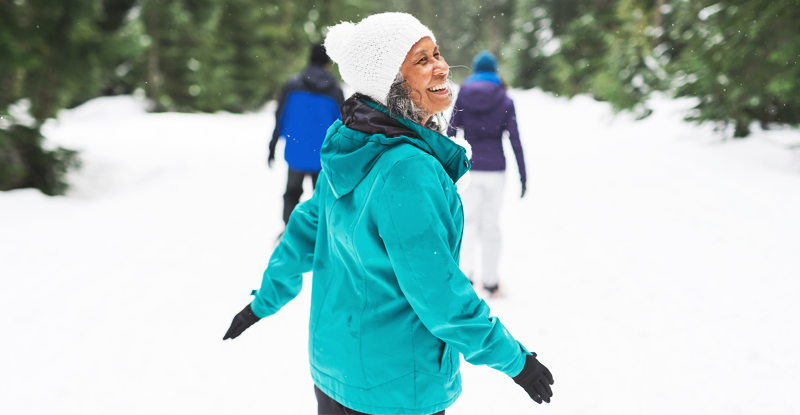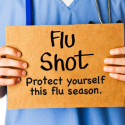Weathering Diabetes

People with diabetes need to take extra care in extreme temperatures or weather conditions such as hurricanes, blizzards, and tornados. Having a plan in place can make the changing conditions manageable.
Planning for summer and warm temperatures
- Use sunscreen. Sunburns stress your body, which can raise your blood sugar levels.
- Stay hydrated. Always carry a water bottle with you and and drink water frequently.
- Check blood sugar levels often .In warm weather blood sugar levels may vary.
- Take extra precautions with your diabetes equipment. In extreme heat, blood glucose monitors and test strips can be damaged.
- Avoid exercising during the warmest parts of the day. Choose the morning or evening or work out in an air-conditioned space.
Planning for winter
- Colds and flu, and cold weather can have an impact on your blood sugar. Take steps to stay warm and avoid getting sick.
- Wash your hands often. This is your first defense against cold and flu germs.
- Stay warm by wearing layers. Don’t forget a hat, mittens or gloves, and shoes and socks that will keep you comfortable.
- Continue to exercise. shorter, colder days can harder to work out, especially if you exercise before or after work. Consider a walk during lunch or try a video that you can do indoors.
- Don’t let the holidays –with their tempting treats–derail your eating habits. Plan to be mindful and continue to eat well balanced meals.
- Create a winter travel emergency kit to keep in the car when you travel. It should consist of a:
- Cell phone and charger
- Shovel
- Windshield scraper
- Flashlight
- Water and snack food
- Extra hats, clothes and mittens
- Blankets
Planning for severe weather
In case you lower power: Assemble a storm emergency kit. A small cooler or lunch box filled with ice packs can serve as a small fridge for your insulin. Also, be sure to stock up on water. Keep canned or shelf stable fruits and vegetables on hand. They will serve as a healthy balance to the packaged high calorie foods that are easy to grab.
In case you must evacuate: Keep an insulin pen, blood sugar monitor, something small to eat and/or you or glucose tablets somewhere that you can access quickly. Your insulin and other supplies may be the last thing you are thinking of during that time. Be sure to keep a list of your medicines since you may not be able to reach your doctors for a few days.
If you are staying in a shelter be sure to identify yourself as a person with diabetes. Speaking up may help you get care if you need it, or assistance in replacing supplies if yours are lost.
The best thing you can do is to work on a plan now. Consult your doctor, pharmacist and dietitian to help you with your plan!
For additional resources on food safety after storms or power outages visit:
https://www.fsis.usda.gov/wps/portal/fsis/topics/food-safety-education/get-answers/food-safety-fact-sheets/emergency-preparedness/a-consumers-guide-to-food-safety-severe-storms-and-hurricanes
Resources
http://www.diabetes.org/living-with-diabetes/treatment-and-care/medication/tips-for-emergency-preparedness.html
https://www.cdc.gov/diabetes/managing/preparedness.html
http://www.mayoclinic.org/diseases-conditions/diabetes/expert-blog/heat-and-diabetes/BGP-20056563
http://www.mayoclinic.org/diseases-conditions/diabetes/expert-blog/diabetes-and-winter/bgp-20090037



